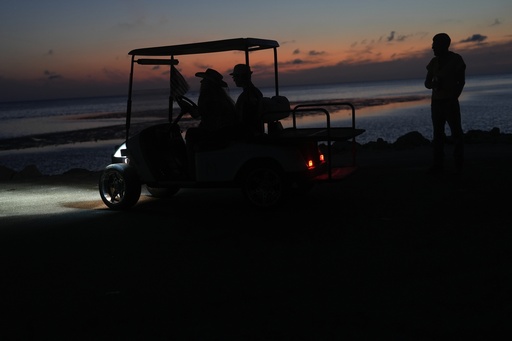Before Hurricane Idalia hit a small fishing village in northwestern Florida, Charles Long was in the process of renovating a two-bedroom house for him and his wife. However, the storm destroyed the house, leaving remnants in a nearby canal and on a neighbor’s property. Rebuilding a new home elevated on stilts, which is required by code, was estimated to cost $450,000, an amount Long couldn’t afford. Instead, he opted to construct a pole barn in Horseshoe Beach for a recreational vehicle he plans to purchase.
Rebuilding after extreme weather events like hurricanes can be a lengthy and costly process for individuals like Long. Despite the billions of dollars the U.S. government has invested in projects to enhance resilience, experts highlight the increasing difficulty in safeguarding coastal communities as climate change impacts intensify. Factors such as the high costs of elevating homes on stilts, building new homes, and escalating insurance rates make the rebuilding process challenging for many.
Resilience plans need to address various issues, including flooding, erosion, intensifying storms, and sea-level rise, which can have compounding effects on communities. Each community requires unique approaches to tackle these threats, whether through nature-based solutions or the construction of sea walls, which can impact ecosystems, shoreline access, and community identity.
According to Paul Gallay, director of Columbia Climate School’s Resilient Coastal Communities Project, creating holistic solutions poses a complex challenge. Balancing community protection with preserving their vibrancy and character is crucial but intricate given the potential for unintended consequences, such as gentrification.
As observed in previous weather disasters, like Hurricane Ike in Galveston and Hurricane Katrina in New Orleans, redevelopment efforts and resilient infrastructure projects can lead to gentrification, displacing residents and altering community dynamics. In Horseshoe Beach, where recovery from Hurricane Idalia is ongoing, concerns about developers and affluent newcomers pricing out existing residents have surfaced.
While funds, shelter programs, and state and federal resources can assist hurricane survivors in their rebuilding efforts, these solutions are often temporary and may not address long-term housing affordability challenges. FEMA disclosed providing over $83 million in grants to nearly 36,000 Idalia victims but emphasized the importance of mitigation projects for communities yet to face extreme weather events.
Coastal communities worldwide are grappling with the impacts of sea-level rise and intensifying storms that threaten their existence. The dilemma between investing in infrastructure protection or relocating due to rising costs and climate risks poses challenges. Educating residents about the risks and uncertainties associated with staying in coastal areas is crucial for informed decision-making.
Reflecting on the situation, Horseshoe Mayor Jeff Williams emphasized that living in paradise comes with costs and downsides, highlighting the tough choices coastal communities must make in safeguarding their homes and environments amidst climate challenges.


